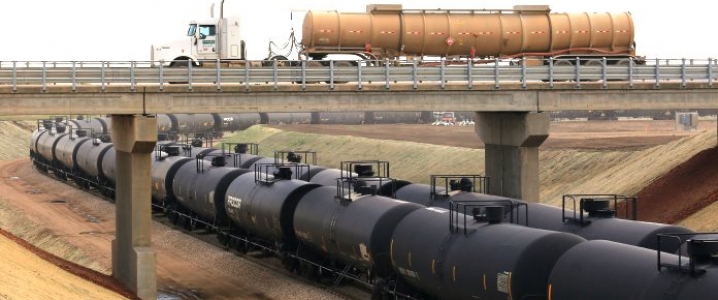For decades, giant Aramco has been a financial enigma, but the curtains have now been pulled back thanks to some anonymous sources revealed to Bloomberg.
Analysts and traders have for decades tried their hand at figuring out the size of Aramco. From its oil reserves to profit, to breakevens per barrel—it has managed to keep the information away from an eager public.
But now, sources presumably close to the small Aramco in-crowd have revealed that H1 2017 net income came in at a whopping $33.8 billion for the oil giant. This figure exceeds that of even Apple, which took in $28.9 billion during that same timeframe.
While information was not forthcoming regarding Saudi Aramco’s oil reserves, sources did share that cash from operations (adjusted cash flow) for H1 2017 was $52.1 billion, with $14.7 billion capex, and $13 billion dividend—the latter a critical metric, and more than twice that of Exxon’s. But when it comes to comparison to other oil majors, even more disparate was Aramco’s net debt, which came in at just $1.3 billion compared to Exxon’s $37.9 billion and Shell’s $66.4 billion.
Aramco’s financials have been a hot topic as many eye the future—if ever—public listing of 5 percent of the company on a foreign exchange—a listing that could generate $100 billion if Aramco’s own valuation holds true. Aramco has insisted that its reserves support a $2 trillion valuation, despite many analyst opinions that have offered a more sober figure for the giant’s valuation of anywhere between $1 trillion and $1.5 trillion.
Using “a rough measure of total oil, condensate and gas production” from Bloomberg, Aramco spent less than $4 per barrel to extract its hydrocarbons. The same rough estimate calculate Shell and Exxon’s spend per barrel at around $20, by comparison.
By Julianne Geiger for Oilprice.com
More Top Reads From Oilprice.com:
- Building The World’s Largest Solar Project
- Augmented Reality Is A Game Changer For Oil & Gas
- Barclays: Expect $51 Oil This Year



















In a research paper titled “Saudi Proven Crude Oil Reserves: The Myth & the Reality Revisited” I gave at the 10th IAEE European Conference in Vienna, 7-10 September 2009, I argued that Saudi Arabia’s remaining reserves at the end of 2008 actually ranged from 90-125 bb and not 264 bb claimed by Saudi Arabia then and reported by BP Statistical Review of world Energy.
At that time Saudi Arabia claimed that its remaining oil reserves amounted to 264 bb based on a recovery factor (RF) of 52% and an oil initially in place (OIIP) of 700 bb. Saudi Arabia’s RF could not have been 52% when the average global RF ranged then from 30%-35%.
Saudi reserves had remained remarkably stable between 1980 and 1987 before suddenly and dramatically jumping from 169.59 bb in 1987 to 254.99 bb in 1988 and then to 264.10 bb in 2009 and 266.5 bb at the end of 2016 despite all the production in between and with virtually no new discoveries.
Other experts such as Colin Campbell and the late Iranian expert Samsan Bakhtiari estimated Saudi reserves at the end of 2008 at 148 bb and 109-129 bb respectively.
Saudi Arabia may have some high recovery factor fields such as the state-of-the-art Shaybah oilfield but an average RF of 52% could be easily discounted given that 90% of Saudi oil production comes from four giant oilfields (Ghawar, Safaniya, Hanifa and Khafji), all of which are more than 60 years old and are being kept flowing by a huge injection of water. Oil recovery rate from these four oilfields ranges between 20% and 25%.
Saudi Aramco has kept remaining oil reserves constant simply by artificially adjusting the R/F and increasing the OIIP each year since 1982 to cover production each year.
Since 2008, Saudi Arabia has produced a total of 32.46 bb according to the 2017 OPEC Annual Statistical Bulletin. If we deduct this figure from my estimate of Saudi reserves in 2009 and those of Campbell and Bakhtiairi, we come to figures of remaining reserves of 58- 93 bb, 115 bb and 77-97 bb respectively and not the claimed 266.5 bb.
This has a huge impact not only on Saudi Arabia’s image as an oil giant but also on its IPO of Saudi Aramco.
I have been arguing for the last four months that Saudi Arabia will eventually withdraw the IPO altogether as they no longer need it financially with the current rise in oil prices.
Still and in the eventuality of the IPO going ahead, Saudi Arabia could not fetch its valuation of $100 bn for the IPO because their figure is based on proven reserves of 266.5 bb. Without independent auditing of the Saudi reserves, no investors are going to buy the Saudi figures.
Dr Mamdouh G Salameh
International Oil Economist
Visiting Professor of Energy Economics at ESCP Europe Business School, London